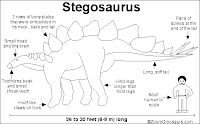Why do giant corporate organisations always manage to suck? Whenever it grows in size and undergoes corporatisation, what is it that converts a happy little homely firm into a collected cornucopia of creeps masquerading in formal wear ? Why is size directly proportional to the degree of gargantuan grievances and acts as an exponential accelerator for the inanity coefficient?
The answer can be approximated from the field of palaeontology, if one knows where to look.
According to the theories of Darwin, creatures evolve to zoom ahead in the race for survival of the fittest. Initial mutations are brilliant ways of getting ahead of the competition. The sabre teeth of the genus of the tigers named after their dentures helped them to pierce the hide of their prey, while the Apatosaurus, popularly known as the brontosaurus, grew to enormous dimensions to be frighteningly out of reach of the gnashing teeth of the smaller carnivores.
It is similar to the small organisation that gets ahead of the competing firms through some brilliance, or more often evolutionary chance later retrofitted as innovation. By luck or design, it is a step towards success and survival, and everyone is happy – the Apatosaurus, the Sabre Toothed Tiger and the now medium sized firm.
However, it is perhaps now that the philosophical threshold of the middle path is trespassed. The proverbial too much of anything is indulged in and over-evolution enters the equation.
Some studies say that the teeth of the sabre toothed tiger became too big to hunt with the speed and ease of their smaller toothed cousins who survived.
The Apatosaurus grew too large for its reptilian brain to organise the body. The digestive cycle for the quantities of food consumed to maintain their monstrous physiology was way too long to be practical. And soon they fell prey to the evils of mega growth.
The Apatosaurus grew too large for its reptilian brain to organise the body. The digestive cycle for the quantities of food consumed to maintain their monstrous physiology was way too long to be practical. And soon they fell prey to the evils of mega growth.
From the organisational point of view, the brains that led the growth from the small to the medium size remained by and large constant. As the firm grew, the mass increased, and layers and layers of lipid accumulated to make up the numbers – or should we say the figure or bottom line. Brilliant brains are rare, and they remained exclusive – stagnant, restricted to the same few that had originally masterminded the initial success, with perhaps infinitesimal increase. The Apatosaurus analogy is now complete. The humongous structure had to be managed by the working intelligence suited for a much smaller system. The decentralised parts of the body malfunctioned, the constitution became crappy, the giant framework remained impressive to the outsider but slipshod and sloppy when viewed with analytical eyes.
And herein, from some misleading studies in the evolutionary field, one can detect a few fundamental mistakes of both the organisation and its copycats – the last mentioned being the naive unfortunates who lap up and ape the gospel as recounted by the corporate communications teams in white-papers and volumes titled The ________ Way .
The giant organisation, in an effort to keep leading the race even with the loads of lard, makes the terrible mistake of trying to squeeze brains out of blubber, by leaping on to the innovation bandwagon, in the curious craze for ideation, excellence, brainstorming and such synonyms of bovine excrement.
 |
| Othniel C Marsh |
We find parallels in the 19th century study of celebrated palaeontologist Othniel C Marsh. He was perpetually puzzled by the Stegosaurus, an elephant size lizard with walnut sized brains. Marsh, the man who named the Apatosaurus, Stegosaurus and Diplodocus, tried to solve the confusion with the hypothesis that the Stegosaur had a second brain in the butt. This was influenced in part by the cavity in the pelvic region of the Stegosaurus skeletons. Of course, this theory has been discredited, but it does serve as a lesson in how gigantic forms with small brains can lead able men to try and find intelligence in the arseholes.
Likewise, the gigantic corporate organisations are desperate to squeeze brains out of their peripheries through relentless quest for innovation, trying to disguise farts as brainwaves, trying to run the mammoth frame by beating out sound and fury from the nether parts, the resulting routine thus becoming a colossal pain in the rump and little else.
It is all very well to make a farcical show of using manufactured historical data as products of butt-brained innovation, but there are some lessons from prehistory we will do well to bear in mind.
It is all very well to make a farcical show of using manufactured historical data as products of butt-brained innovation, but there are some lessons from prehistory we will do well to bear in mind.



a huge blow on our funny bones ... the author leaves us laughing and writhing in pain with simultaneous ease!
ReplyDeleteVery true and very funny :D
ReplyDelete